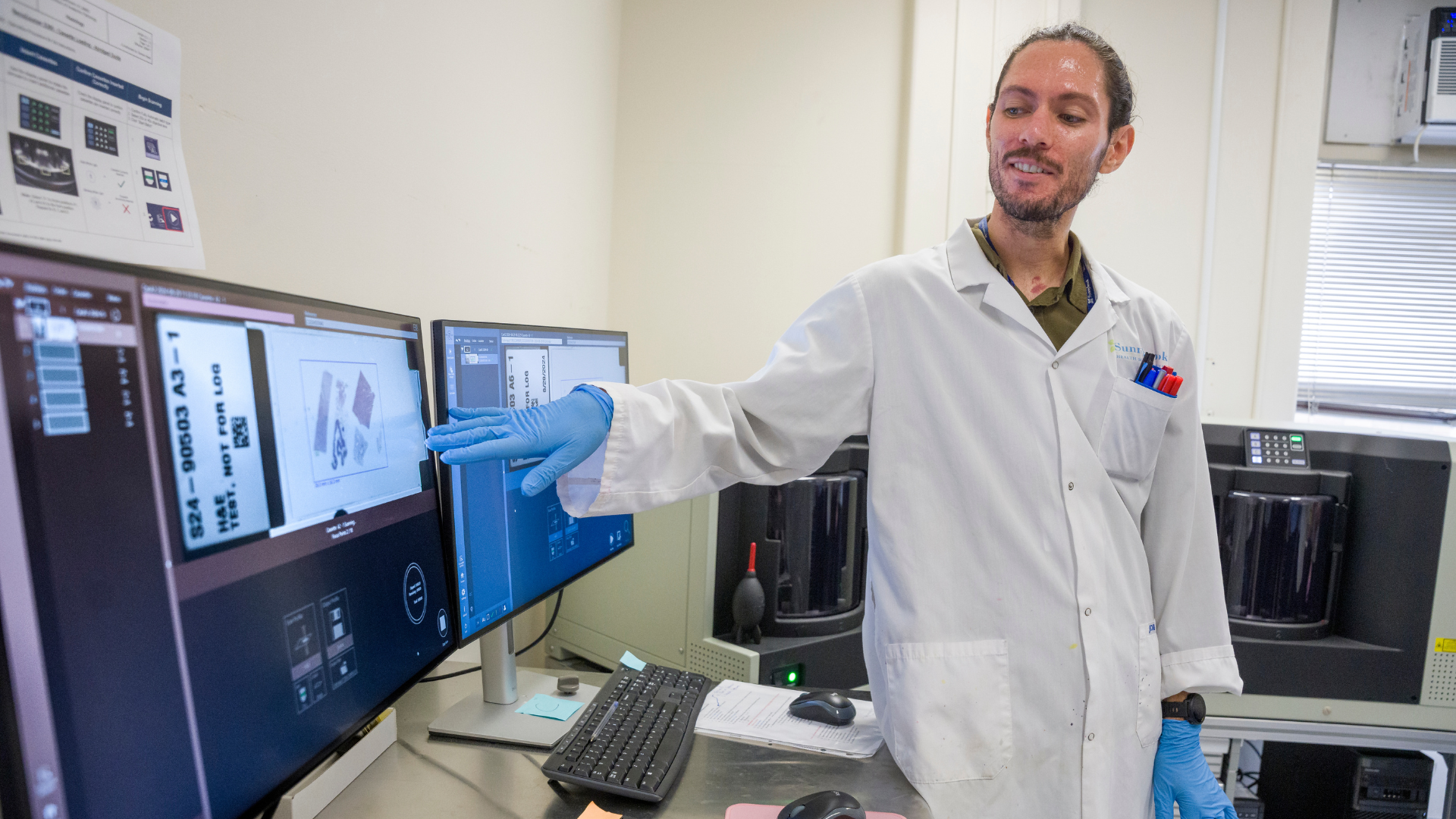Digital pathology will bring improved and timely access for Ontarians
The transition to a digital pathology platform at the Pathology Lab at Sunnybrook Health Sciences Centre will allow for quicker, more efficient access to expert pathological assessments in the diagnosing of disease and guidance of treatment decisions for Ontarians.
“Digital pathology is an enabler of efficiency, which will benefit both patients and staff. This moves the field of pathology forward in a significant way,” says Dr. Michelle Downes, division head of anatomic pathology at Sunnybrook.
The field uses various tools and approaches – such as macroscopic, microscopic, biochemical, immunologic and molecular analysis – to examine tissue and fluid samples to better diagnose disease and guide treatment decision-making.
The lab processes samples, which generate a glass slide containing the stained patient tissue or cells. These glass slides are traditionally viewed using a microscope. With the transformative move to digital pathology, eventually there will be no need to look at the glass slide.
“Looking toward the future, when another hospital requires subspecialty expertise, digital consults will make the process faster and more efficient, while maintaining the quality,” explains Tanya Jorden, manager of anatomic pathology and laboratory information systems at Sunnybrook. “Hospitals currently have to package up glass slides and send by courier. In the future, these slides will be captured digitally, eliminating delays caused by delivery. This will allow quicker access to site experts and provide timely access to patient results.” Another exciting prospect will be incorporating artificial intelligence (AI) tools into the workflow.
Implementing digital pathology involved the purchase of whole slide scanners, an image storage repository and an image management software called Synapse Pathology. This system is fully integrated into the pathology information system. Pathologists will access their case in the pathology system and launch the images directly from it. The complete implementation of the infrastructure and process at Sunnybrook will take approximately one to two years as additional scanners for fluorescent images and cytology cases are acquired.
“Our high-performing team was already working closely with partners to facilitate the patient journey by ensuring accurate and timely reporting of results; this transformation will only work to improve that,” adds Dr. Downes.
With its highly specialized expert staff, and as a part of the Precision Diagnostics and Therapeutics Program at Sunnybrook, the Division of Anatomic Pathology services not only Sunnybrook’s own programs, but also, on a consultative basis, as a critical resource for other health-care centres and clinics throughout the province.
The division processes in excess of 27,000 surgical and biomarker cases and 15,000 cytology specimens annually. The pathologists are organized into teams by their sub-specialty with many possessing fellowships in their area of practice.
This initiative was supported by a generous donation by Myron and Berna Garron.






